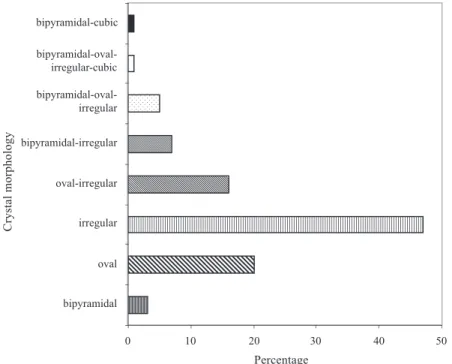Characterization of a Bacillus thuringiensis strain collection isolated from diverse Costa Rican natural ecosystems
Texto completo
Figure



Documento similar
Samples of “Turrialba cheese” (Latin-type fresh cheese) were obtained from different locations in Costa Rica to determine the levels of contamination with
In addition to two learning modes that are articulated in the literature (learning through incident handling practices, and post-incident reflection), the chapter
GCLc characterization in MLEC and lung fibroblasts isolated from Gclc(f/f) and Gclc(e/+) mice. A) Western blot analysis (left) and quantification (right) of GCLc and GCLm in MLEC
In summary, the ability to perform a complete characterization of all TE properties of a bulk material as a function of temperature, from a single electrical impedance
To do that, we have introduced, for both the case of trivial and non-trivial ’t Hooft non-abelian flux, the back- ground symmetric gauge: the gauge in which the stable SU (N )
The enormous load is suspended from a headband which the porter grips with his hands to take some of the strain (Detail from the peace side of the 'Standard of Ur'
The resulting profiles were essentially identical, thus show- ing that the nucleus is the preferential accumulation site of the PSTVd (+) mc and linear (ml) genomic forms, in
Strains belonging to Bacillus cereus group include six different species among which are Bacillus thuringiensis, Bacillus weihenstephanensis and Bacillus cereus sensu stricto, a